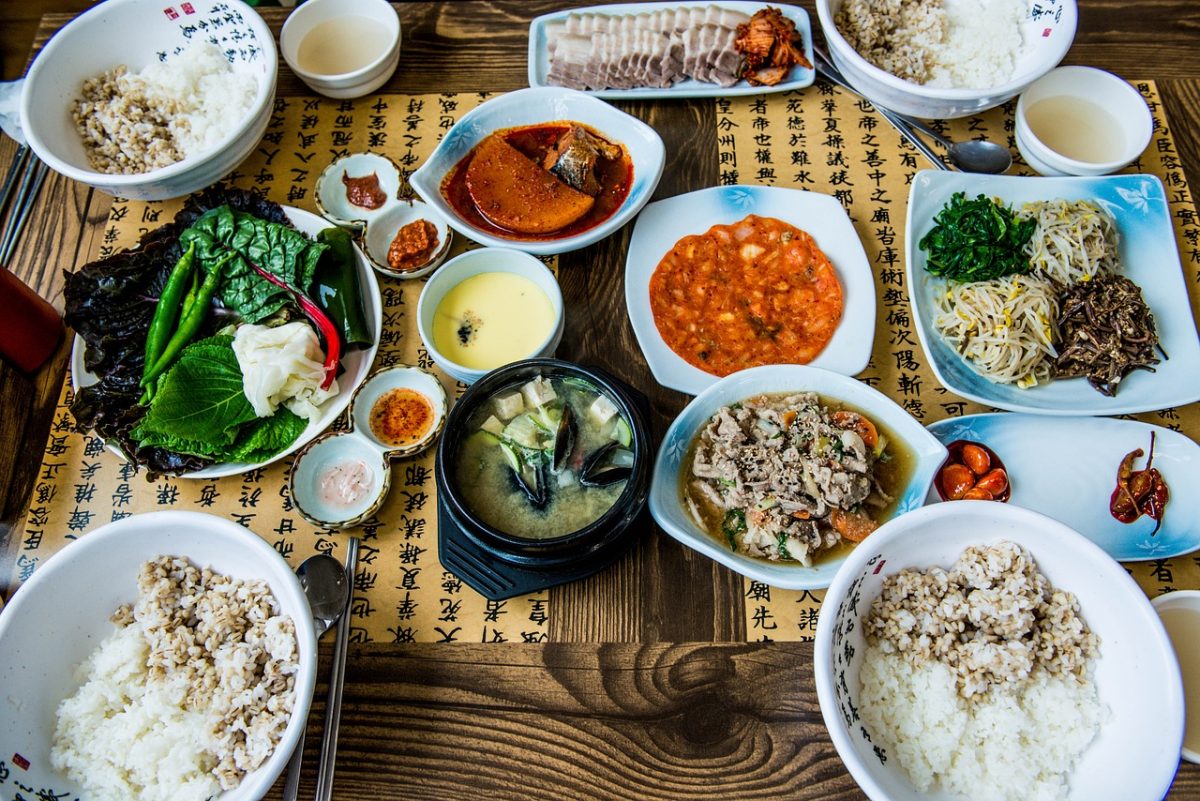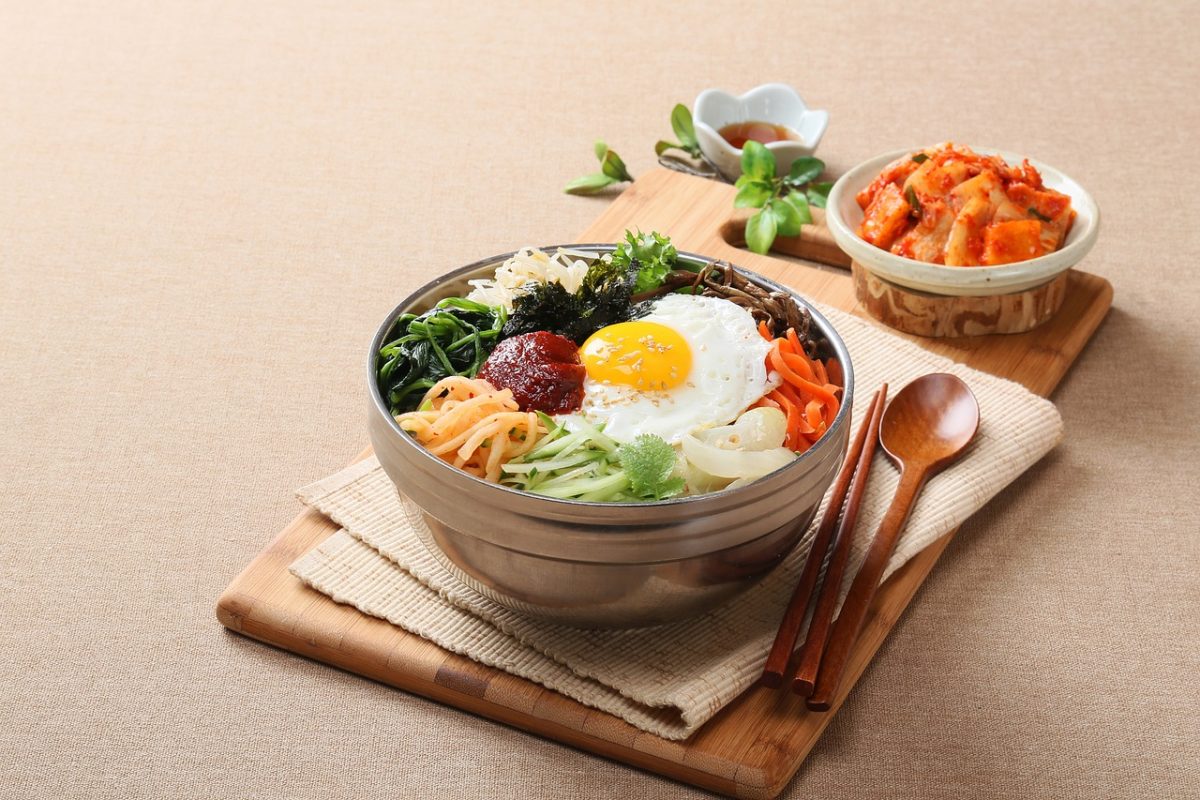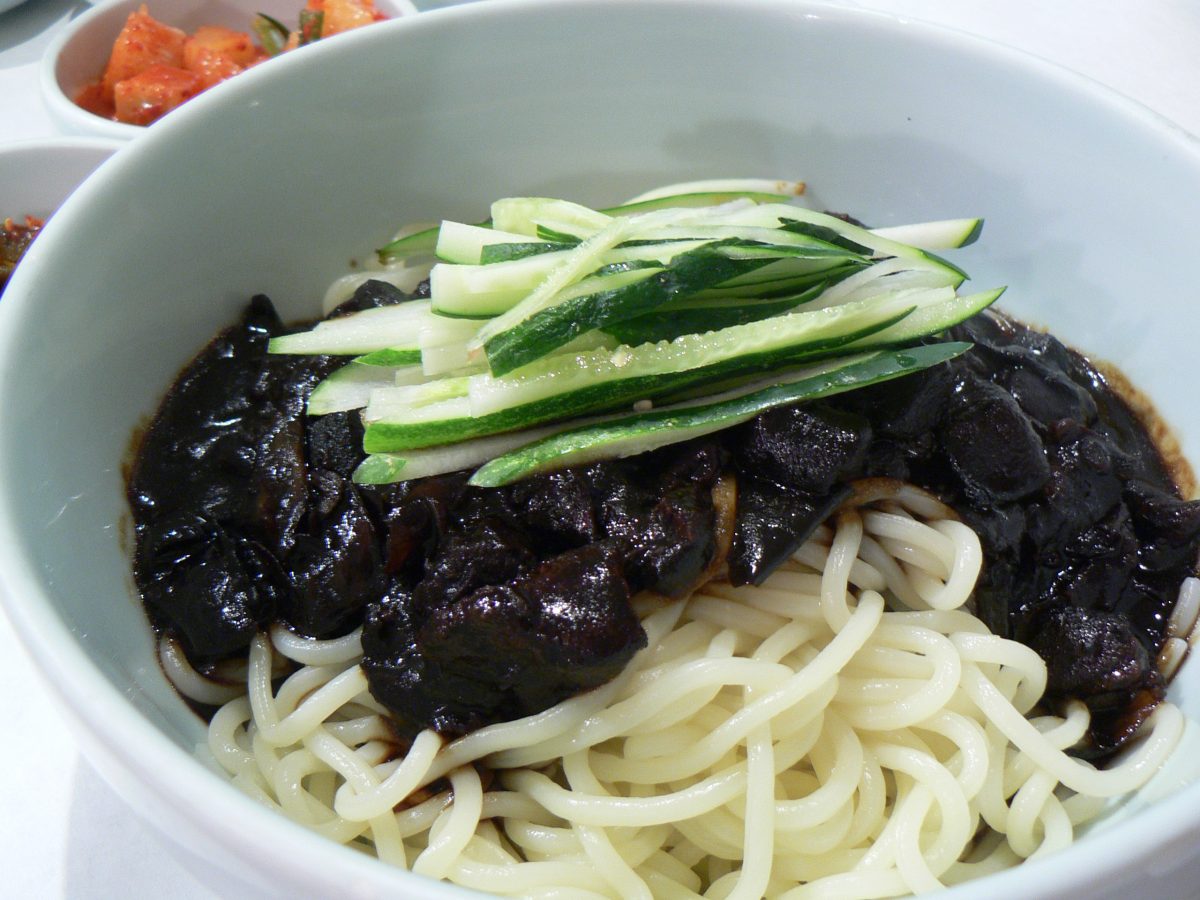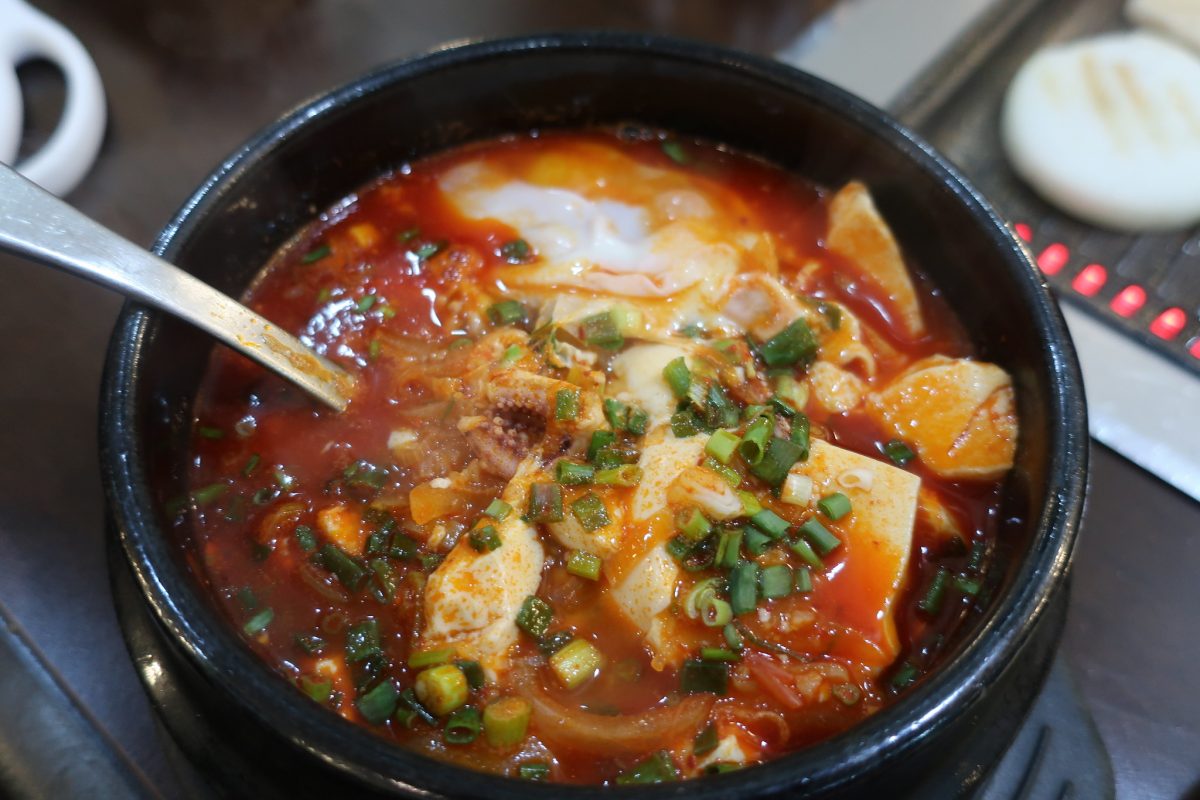Korean Food – 20 Korean Dishes You Must Try Before You Die

K-pop, Korean skin care, kimchi… There are many things to love about South Korea and if it’s the latter one that draws your attention most then you should consider exploring some other Korean food options as well.
Korean cuisine has a lot to offer – from different kinds of grilled meat through hot pot dishes to sweet rice desserts. One thing you can be sure of though is that it will be varied, zesty and well-balanced. What’s more, the list of health benefits attributed to a number of Korean dishes is quite impressive. And if that hasn’t convinced you yet, you should also know that many local foods and drinks are closely connected with Korean customs and traditions and therefore consuming them may involve a certain kind of ceremony.
Are you feeling hungry and intrigued yet? These are 20 Korean dishes you must definitely try at least once in your life.
Kimchi

© Photo by 709K on Pixabay
What is it? Fermented Vegetables
If you could only try one Korean dish, it would have to be kimchi! It’s what sushi is for Japan or pad thai for Thailand – the Korean cuisine would simply not exist without this staple dish prepared by salting and fermenting different vegetables, most commonly napa cabbage and Korean radish.
Apart from the fermentation process, what gives kimchi its characteristic taste is a mix of seasonings which include garlic, ginger, and gochugaru (powdered Korean chilli peppers). Kimchi is a popular appetiser but it can also be served as a main dish. This Korean food is rich in nutrients and vitamins yet at the same time low in calories – no wonder that UNESCO included it on the Representative List of the Intangible Cultural Heritage of Humanity!
Bibimbap

© Photo by changupn on Pixabay
What is it? Korean Mixed Rice
Travellers rank it among world’s best foods, Koreans also appreciate it for the convenience of its preparation. Whatever your reason is, make sure you also try some bibimbap. This Korean dish is basically a bowl filled with steamed rice and covered with sautéed veggies, kimchi and gochujang (Korean chilli pepper paste). You can also have it with an addition of half-raw egg and sliced beef on top if you wish. Whatever toppings you choose to have, just mix it all together once you get your bowl and enjoy this Korean classic!
Jajangmyeon

© Photo by stu_spivack on Flickr
What is it? Noodles with Sweet Bean Sauce
Jajangmyeon is one Korean food that won’t leave you indifferent, both because of its distinctive black colour and its unique, sweet and savoury taste. Its main ingredients are noodles, chunjang (Korean black bean paste that gives the dish the dark colour) and diced pork (although the seafood varieties are also widely available). Since the chunjang paste is somewhat bitter, it is normally balanced by adding a little bit of sugar to the dish. You may have your jajangmyeon with toppings such as cucumber, bamboo sprouts or egg.
Naengmyeon

© Photo by pattonx2 on Flickr
What is it? Cold Noodles Soup
Another option for the noodle lovers is this Korean cold noodles soup – a perfect dish for the hot summer days. The noodles, most often made from buckwheat flour, are long and thin and they come with a cold beef broth. This Korean dish originally comes from Pyongyang but it is also popular across South Korea – so popular that there is even a famous Korean pop song named after it!
Makgeolli

© Photo by Cytryna on Flickr
What is it? Korean Rice Wine
“Drunken rice”, as some call it, is Korea’s oldest alcoholic beverage. Traditionally, Koreans used to brew it at home by mixing steamed rice, water and nuruk (Korean fermentation starter), letting it ferment for 7 to 10 days and then filtering it.
Makgeolli has a milky consistency, it’s a little bit fizzy with a rich flavour that includes hints of sweetness, bitterness, and acidity at the same time. Its alcohol content ranges between 6% and 9 %. Since the drinking culture is an important part of the Korean traditions, make sure you drink makgeolli cold from small bowls. You can either turn the bottle upside down a couple of times to mix the sediments (carefully let the gas out before opening the bottle) or drink just the unmixed clear liquid.
This Korean rice wine tastes best with kimchi, Korean pancakes, and grilled meats.
Soju

© Photo by Samia Liamani on Unsplash
What is it? Korean Liquor
As you know by now, drinking makes for an important part of a truly Korean dining experience. But if the milky makgeolli is not your thing, don’t worry – we have a good alternative and it’s called soju!
Stronger (the alcohol content may even reach more than 50%), it is a clear spirit distilled from rice, barley or wheat (sometimes also from tapioca and sweet potato). You would normally pair it with samgyeopsal (grilled pork belly) and drink straight. Mixing it with beer is also another popular way to enjoy soju.
As for the etiquette, remember to wait until the glass is empty before filling it again. If somebody is pouring the drink for you make sure to hold the cup in your right hand supporting your right wrist with the left hand.
Find out more about this national drink of Korea in our guide!
Samgyeopsal

© Photo by Clint Bustrillos on Unsplash
What is it? Grilled Pork Belly
Gu-ee is the Korean term for all the grilled dishes traditionally prepared at the centre of the table over a charcoal grill. If you go for gu-ee in Korea, you will most likely have some samgyeopsal – slices of fatty pork belly. You normally grill them without any seasonings and accompany them by some vegetables prepared with the use of the pork’s trickling fat, steamed rice or dipping sauces. This Korean dish is one of the locals’ favourite, they even celebrate the Samgyeopsal Day on the 3rd of March!
Budae Jjigae

© Photo by Charlie Lee on Flickr
What is it? Spicy Sausage Stew (also known as the Korean Army Stew)
Budae jjigae is a filling, easy-to-make hot pot dish. It contains a number of readily available products such as sausages, canned beans, instant noodles, canned ham, and sliced cheese. Now a popular dish in the college cafeterias across Korea, the history of budae jjigae actually dates back to the times of the Korean War. Food was scarce then, and the sad reality was that many people could only rely on the surplus processed foods obtained from the U.S. military bases.
Tteokbokki

© Photo by 재정 안 on Flickr
What is it? Stir-Fried Rice Cakes
Tteokbokki are long, cylinder-shaped stir-fried rice cakes, often accompanied by fish cakes, green onions and boiled eggs. The varieties of this popular Korean street food are endless but you will most probably have it seasoned with gochujang (Korean chilli pepper paste) or ganjang (soy sauce) in its non-spicy version. There is nothing not to love about tteokbokki. Its texture and the umami-rich taste make it one of the more addictive Korean foods you will ever have!
Haejangguk

© Photo by sangmins on Pixabay
What is it? Hangover Soup
If you happened to have one soju too much and a nasty hangover stands in your way to spending another joyful day on your Korea trip, haejangguk comes to your rescue.
It’s not a coincidence that this filling Korean soup is called “hangover soup”. Wholesome beef broth is the base for this dish and other ingredients include napa cabbage, meat, vegetables, and congealed ox blood or blood sausage. This mix is considered super healthy due to its high content of vitamins and electrolytes, so it will surely help you recover!
Samgyetang

© Photo by Cyprien Delaporte on Unsplash
What is it? Ginseng Chicken Soup
Another Korean soup considered a health booster is samgyetang. Normally eaten on hot summer days it’s THE dish to order if you’re so hungry you could eat a horse! The main ingredient of this Korean dish is an entire chicken stuffed with rice, ginseng, garlic, and jujube. The meat is tender and all the other ingredients make the broth remarkably flavourful – simply delicious!
Bulgogi

© Photo by stu_spivack on Flickr
What is it? Korean BBQ Beef
Bulgogi is another example of a gu-ee dish (the one mentioned before being samgyeopsal) and a staple Korean BBQ food. The beef used for bulgogi is normally a finely sliced sirloin marinated in a mix of soy sauce, sesame oil, sugar, garlic, and black pepper. It is common to serve bulgogi with a side of lettuce leaves which you can use to wrap the beef and then eat them all together.
Jeon

© Photo by Lillakanarie on Flickr
What is it? Korean Pancake
Jeon, the Korean pancake, is much more than just a breakfast food. As it comes in a number of varieties, jeon is also a popular snack or side dish. You may find it on the menu under a number of different names (soegogi-jeon, gochujeon or pajeon, among others) depending on what you want to have inside it.
Whether you choose beef, kimchi or green onions, it will come coated in a mix of eggs and flour and pan-fried. If you’re in the mood for dessert, you should also look out for the sweet version called hwajeon!
Japchae

© Photo by Naotake Murayama on Flickr
What is it? Stir-fried Glass Noodles
This Korean dish is a classic. Its main ingredient is dangmyeon – glass noodles made from sweet potato starch. They are topped with a mix of vegetables and meat, and seasoned with soy sauce and sesame oil. It sounds like quite an ordinary recipe yet japchae is truly delicious. Therefore it’s a dish Koreans often choose to have on special occasions such as birthdays or weddings.
Hoddeok

© Photo by Joe McPherson on Flickr
What is it? Korean Sweet Pancake
Hoddeok is a delicious flour-dough sweet pancake filled with sugar syrup, honey, cinnamon and/or peanuts. It is a popular street food, and Koreans tend to eat it a lot during the winter season.
Sundubu Jjigae

© Photo by Ryo Tezuka on Flickr
What is it? Soft Tofu Stew
The star of this Korean stew is sundubu – an extra soft tofu. Other ingredients include vegetables, chilli paste and an optional serving of meat or seafood and a raw egg. You eat it from the very same vessel in which it was cooked and you would normally accompany it with steamed rice and some banchan (traditional Korean side dishes). As you can order it without meat, it’s a great option for vegetarians!
Dasik

© Photo by jamiefrater on Flickr
What is it? Korean Tea Cookies
Dasik are small colourful and cute-looking cookies made from rice flour, honey and black sesame, pine pollen, soybean or chestnut (the flavour determines the colour of each dasik). It’s a kind of hagwa (traditional Korean confections) that tastes best paired with tea. It’s also a great gift idea from your trip to Korea!
Yasik

© Photo by Republic of Korea on Flickr
What is it? Sweet Rice Dessert
If you have a sweet tooth, make sure to try yasik – Korean sweet rice dessert with nuts and dried fruits! It has a soft and sticky texture and a strong honey taste (it is used to stick all the ingredients together). According to a Korean tradition, you should have some yasik on the first full moon of the new lunar year.
Sujeonggwa

© Photo by maangchi on Flickr
What is it? Korean Cinnamon Punch
Sujeonggwa is a fabulous Korean dessert drink made from dried persimmon, cinnamon, and ginger and sweetened with some extra sugar or honey. This mix of ingredients makes the punch warming, thus perfect for the winter time (even though it’s normally served cold). Sujeonggwa is also widely available canned.
Sikhye

© Photo by David on Flickr
What is it? Sweet Rice Drink
Sikhye is a sweet rice drink with grains of rice and pine nuts in it. Koreans love it for its finely balanced flavour and the unique barley smell. Moreover, it is a great digestive and it even helps cure hangovers, some say!
Korean dining etiquette:
-
The free side dishes (banchan) are communal and are to be shared with everyone at the table. All banchan should be served in odd numbers since even numbers are believed to bring bad luck.
-
Koreans never split the bill, one person pays for all (usually the oldest one at the table).
-
Tipping isn’t customary in South Korea and unless you’re dining at a western restaurant, it’s not recommended to tip the waiter.
Tempted already? Plan a trip to Seoul or Busan and try some of the authentic Korean food listed here yourself!

